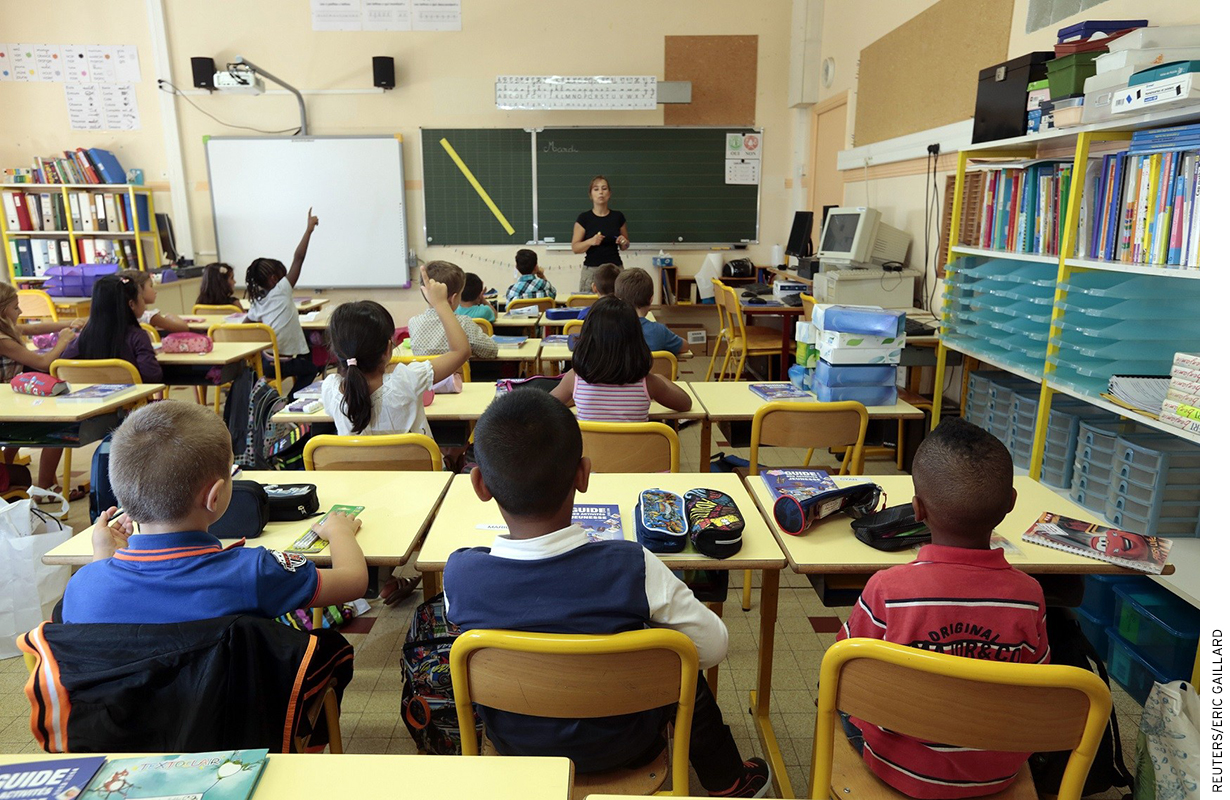
Education debates in the United States often occur between two poles. On the one hand, we have the libertarian impulse, which valorizes free markets, competition, and parental choice; on the other, we find a visceral defense of the district school. Middle paths, such as the urban district portfolio model, combine school choice and government accountability. These three visions for public education generate conflicts that are politically charged, and carry high stakes in terms of legitimacy and financial support.
But these conflicts operate within the same conceptual framework: Public education is the neighborhood school, and all alternatives must be justified against it—if they are to be supported at all. The result is entrenched competition between entire school sectors, such as charter versus district, public versus private. Every time we read, “Vouchers don’t work,” or “Charter schools take funding from public schools,” we see evidence of the underlying framework. District schools are the cultural norm; charter schools and private-school-scholarship programs assert legitimacy on the basis of superior academic results.
This construct is historically contingent. In fact, our school systems used to fund a variety of diverse schools. Most democracies still do. Our systems are “uniform,” theirs are “plural.” Uniformity here does not mean similitude of resources, content, and outcomes, but rather uniformity of culture and of delivery.
As I argue in a recent book, Pluralism and American Public Education: No One Way to School, it is time to consider not only whether some departures from uniformity should be allowed, but also whether uniformity comports with democratic principles in the first place. “No One Way to School” investigates political philosophy, constitutional history, cultural theory, and academic and civic outcomes in depth. Some highlights follow.
When and why did American school systems stop supporting Catholic, Congregationalist, nonsectarian, and, in some wards of New York City, de facto Jewish schools? In the mid-19th century, the Protestant majority began to fear that the millions of Catholic immigrants who flocked to our shores would harm American democracy. Over time, nativist groups capitalizing on these concerns became politically prominent enough to legislate uniformity instead of pluralism. The term “uniformity” is included in many of our state constitutions, as are so-called Blaine Amendments that forbid the funding of sectarian schools. As a result, the district structure is all we have known for a hundred years, and our cultural imaginations have become constrained by it.
Most democracies, meanwhile, adopted educational pluralism, which disaggregates the funding, regulation, and delivery of schools. Educationally plural nations thus support a mosaic of schools (whether Jewish, Catholic, Montessori, or Waldorf), each of which is accountable to the state for academic results. For example, the Netherlands supports 36 different types of schools on equal footing. England, Belgium, Sweden, Singapore, Australia, and most of the provinces of Canada fund diverse schools, too. These nations also evaluate publicly funded schools’ academic performance to a degree that many American reformers might find uncomfortable, such as by requiring them to teach a common curriculum and to undertake public examinations. At the same time, myriad schools are free to teach that curriculum within a philosophical framework that comports with their particular ethos.
Educational pluralism does not cast common purpose to the wind. Rather, it assumes that all of us have an interest in educating the next generation–hence government regulation and oversight. It also assumes that education cannot be morally neutral–hence the funding of schools that reflect diverse values (up to a point, of course). Pluralism solves some problems and creates new ones, which I explore in No One Way to School. But the point I want to make here is that the United States is an outlier among its democratic peers in identifying public education exclusively with the neighborhood school.
Of course, some districts and states in America have moved toward what other democracies take for granted. Accountability structures and tougher standards, charter schools, and school-choice programs have changed the educational experience of hundreds of thousands of children and their families. These important changes make it possible to contemplate rewriting the rules all the way down. In sociological terms, the plausibility structure has changed; what was inconceivable 30 years ago is now conceivable, because we have begun to see, experience, and study it.
But cultural expectations die hard, and each innovation still has to justify itself against entrenched political interests and the cultural norm. In Maryland, the small and aggressively constrained charter school sector fights for funding. In Washington, D.C., the charter sector is alive and well, but the modest Opportunity Scholarship Program must argue repeatedly for its survival. Denver is held up as a model of collaboration between traditional and charter schools, but this détente was hard won and does not yet extend to nonpublic schools. In vast tracts of the country, meaningful deliberation has not even begun.
A deeper debate, therefore, would not merely endorse new types of schools and models, but would call the existing framework into question. Changing the cultural norm from uniformity to pluralism would engage with theory, practice, and political compromise, to be sure. But the end result might be the creation of more nimble, responsive, and high-quality school systems that prepare the next generation of American citizens.
— Ashley Berner
Ashley Berner is Deputy Director of the Johns Hopkins Institute for Education Policy and Assistant Professor of Education.
This post originally appeared on the Brown Center Chalkboard.


